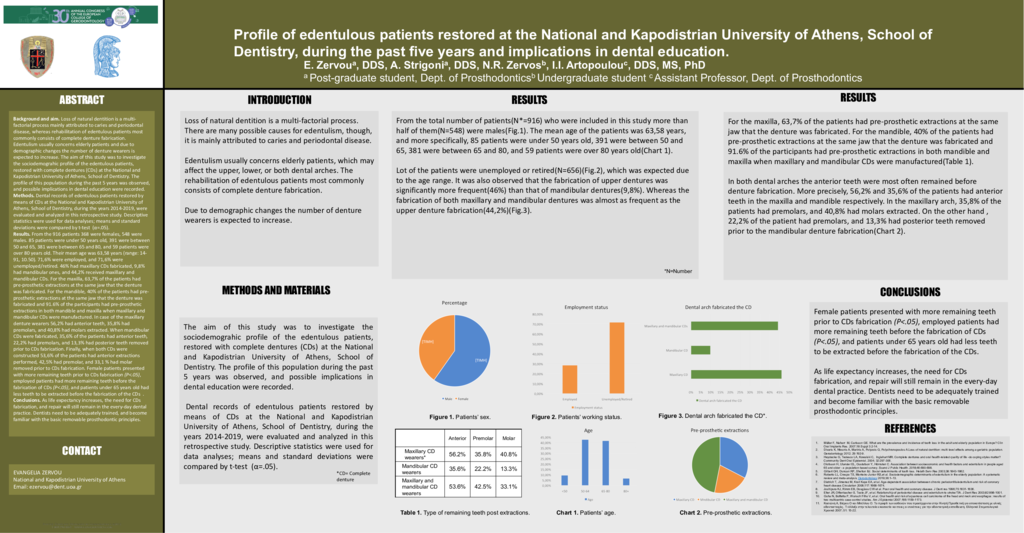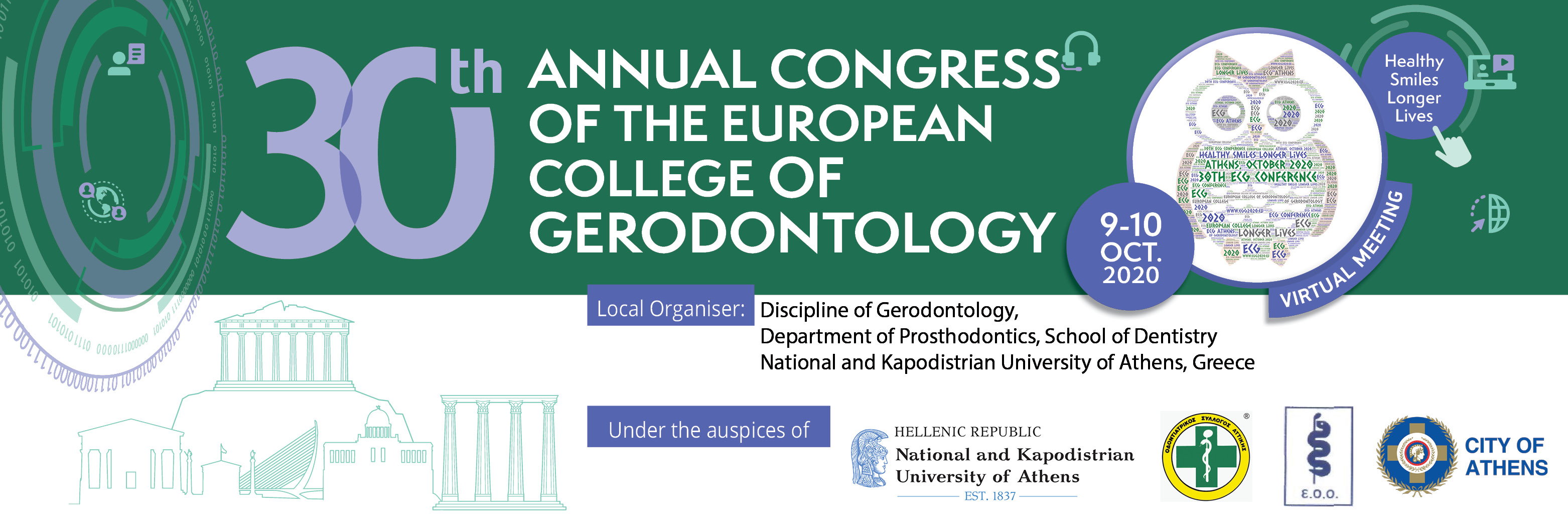Background and aim: Loss of natural dentition is a multi-factorial process mainly attributed to caries and periodontal disease, whereas rehabilitation of edentulous patients most commonly consists of complete denture fabrication. Edentulism usually concerns elderly patients and due to demographic changes the number of denture wearers is expected to increase. The aim of this study was to investigate the sociodemograhic profile of the edentulous patients, restored with complete dentures (CDs) at the National and Kapodistrian University of Athens, School of Dentistry. The profile of this population during the past 5 years was observed, and possible implications in dental education were recorded. Methods: Dental records of edentulous patients restored by means of CDs at the National and Kapodistrian University of Athens, School of Dentistry, during the years 2014-2019, were evaluated and analyzed in this retrospective study. Descriptive statistics were used for data analyses; means and standard deviations were compared by t-test (α=.05). Results: From the 915 patients 367 were females, 548 were males. 26,74% were employed, 63,52% were retired and 9.72% were unemployed. 46,07% had maxillary CDs fabricated, 9,7% had mandibular ones, and 44,2% received maxillary and mandibular CDs. In the maxilla, 63,74% of the patients had pre-prosthetic extractions, in the mandible, 40,44% of the patients had pre-prosthetic extractions, and 57,28% of the participants had pre-prosthetic extractions in both mandible and maxilla. In case of the maxillary denture wearers 55,9% had anterior teeth, 35,78% had premolars, and 40,52% had molars extracted. When mandibular CDs were fabricated, 35,95% of the patients had anterior teeth, 22,47% had premolars, and 13,48% had posterior teeth removed prior to CDs fabrication. Finally, when both CDs were constructed 53,58% of the patients had anterior extractions performed, 42,46% had premolar, and 33,08% had molar removed prior to CDs fabrication. Female patients presented with more remaining teeth prior to CDs fabrication (P<.05), whereas most remaining teeth were in the anterior area (P<.05). Conclusions: As life expectancy increases, the need for CDs fabrication, and repair will still remain in the every-day dental practice. Dentists need to be adequately trained, and become familiar with the basic removable prosthodontic principles.
- 42 views



